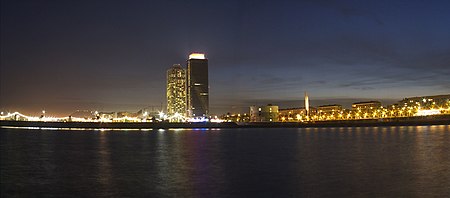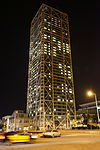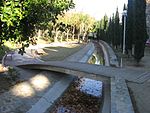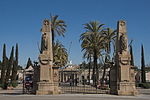La Vila Olímpica del Poblenou

La Vila Olímpica del Poblenou or La Villa Olímpica (The Olympic Village of Poblenou) is a neighborhood in the Sant Martí district of Barcelona, Catalonia (Spain). It was constructed in the late 1980s and early 1990s for the 1992 Summer Olympic Games which took place in Barcelona. Its construction was devised by Oriol Bohigas, David Mackay and Albert Puigdomènec as a residential area in the otherwise industrial and working-class district of Poblenou, which underwent regeneration but involved massive expropriation, as well as the destruction of a sizeable portion of the district, including Industrial Revolution factories of architectural value such as Fàbrica Foret. It follows essentially the reticular outline of Eixample and Poblenou, with about 2000 new apartments in the area, owned by the mixed public-private company VOSA (Vila Olímpica Societat Anònima).
Excerpt from the Wikipedia article La Vila Olímpica del Poblenou (License: CC BY-SA 3.0, Authors, Images).La Vila Olímpica del Poblenou
Carrer de l'Arquitecte Sert, Barcelona
Geographical coordinates (GPS) Address Nearby Places Show on map
Geographical coordinates (GPS)
| Latitude | Longitude |
|---|---|
| N 41.390833333333 ° | E 2.1991666666667 ° |
Address
Taj Mahal
Carrer de l'Arquitecte Sert
08001 Barcelona (Sant Martí)
Catalonia, Spain
Open on Google Maps








